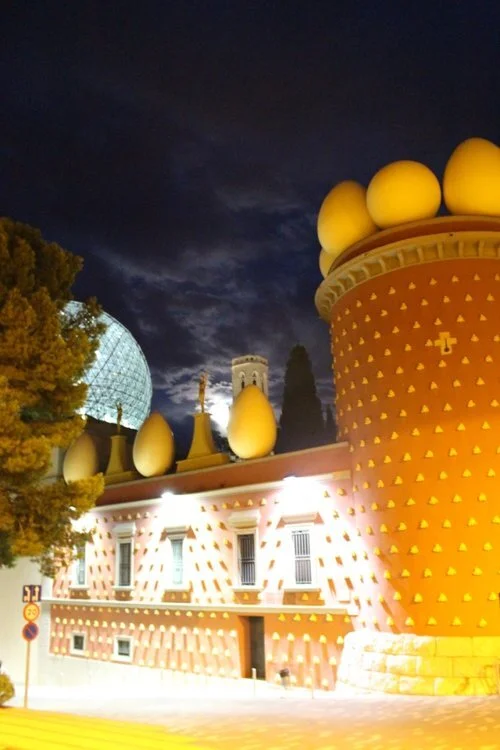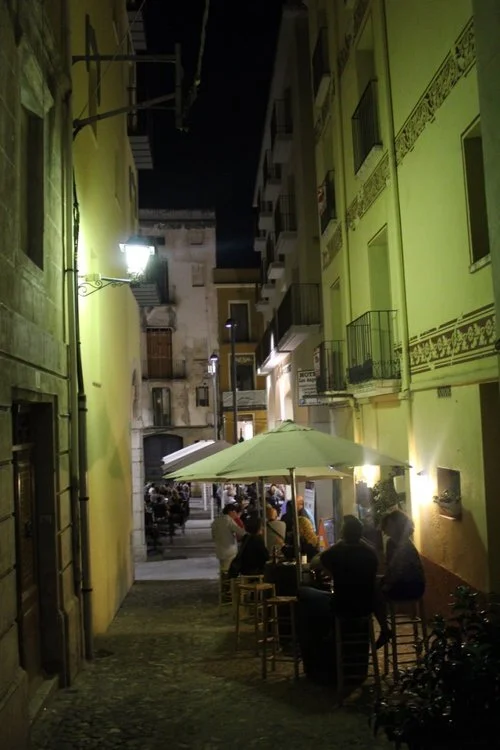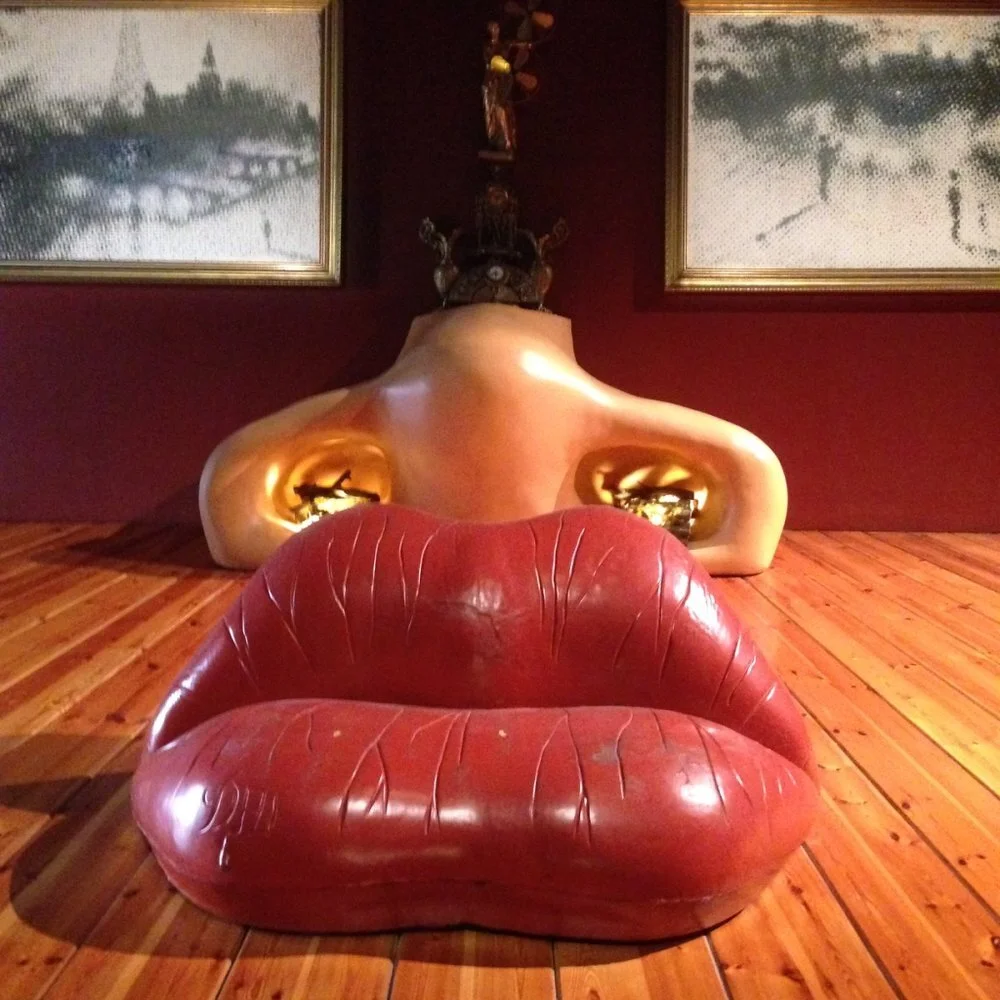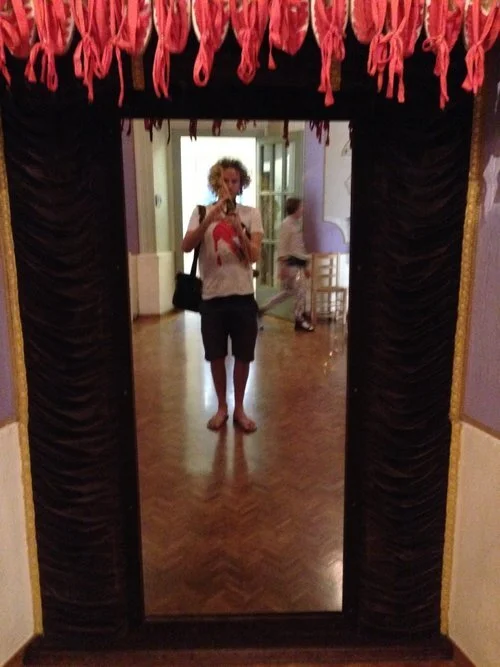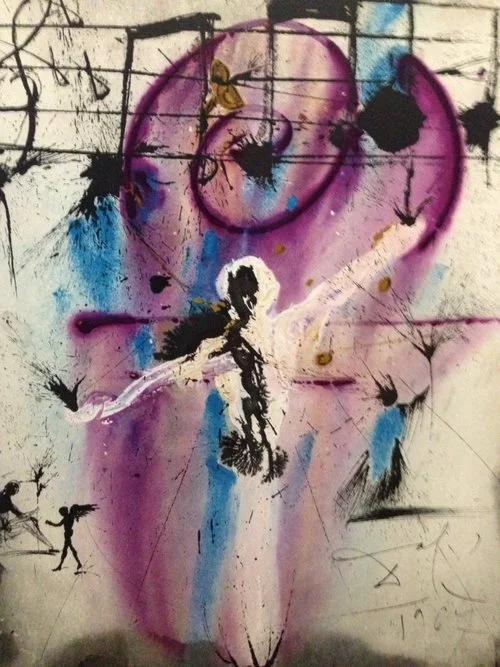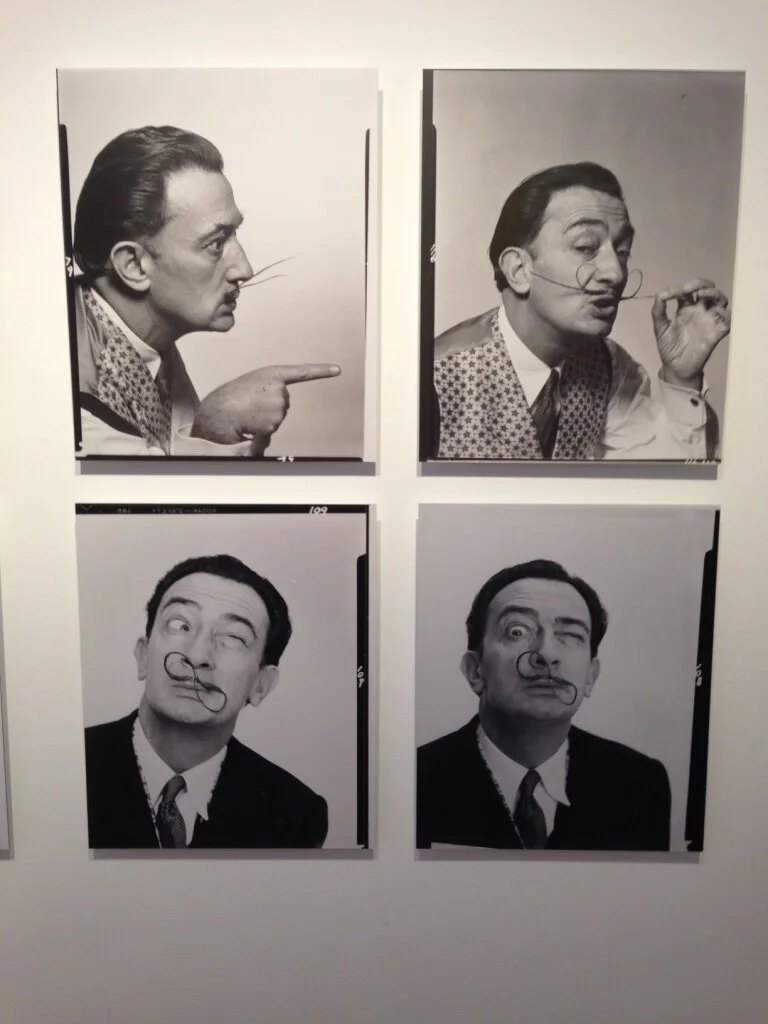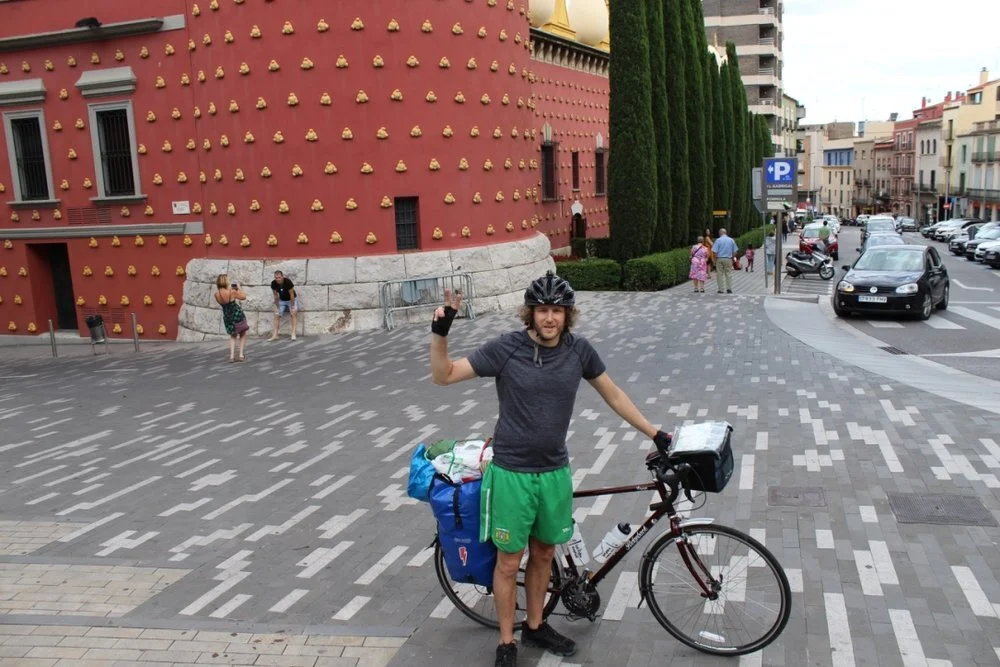!Hola surrealism, Hola Figueres¡
Figueres, Catalonia.
The surrealist art of Salvador Dalí was one of David Bowie’s inspirations as he sought to tangle his musical influences with the world around him. Indeed, the BBC had likened Life on Mars? epic and surreal themes to be a cross between a Broadway musical and a Salvador Dalí painting. So after a streamy day on the Spanish highways tailing tractors, I rolled into the Catalan artist’s hometown where there was plenty of surrealistic treasures to uncover.
Arriving at dusk and quickly dispatching of two majestically cold beers, Figueres centre was a maze of atmospheric little streets where the scents of sizzling onion and garlic teased you around corners into humming plazas warmed by families dining on tapas and Rioja under the feint glow of street light and whitewashed walls. I wandered around aimlessly, and a little tipsily, revelling in the warm air and soft light until I stumbled on the strange statue in the picture above. I stood transfixed as under the speckles of early autumn light, the Homage to Isaac Newton by Salvador Dalí truly revealed itself. Its open stomach, flayed limbs and suspended heart held a dreamlike appearance as splinters of sunlight stole through its bones. But this was typical of the Surrealists, artists who brought irrational imagery to the world prised from their dreams. I slept walked on myself, until a sheen of white light led me to the Salvador Dalí casa; his former home and now a museum. It’s red brick turrets looking like a collection of delicately poised Humpty Dumpty’s awaiting their fate.
Bowie and Dalí’s lives coiled around each other in unexpected ways. Not only was Dalí’s surrealist art a source of inspiration for Bowie’s lyrics, but Dalí was an admirer of our David too. He had seen him play at Radio City Music Hall in New York and various other shows, admiring this musician whose lyrics and performance were drenched with the world of art and theatre. Bowie returned the favour before his 1976 Isolar tour by screening Dalí and Luis Buñuel’s revolutionary silent film, Un Chien Andalou. Bizarrely for me, and surreally for everyone else, it featured not only ants crawling in and out of a man’s hand, a razor slicing open a woman’s eyeball, dead donkeys sprawled across pianos but also a man cycling in a nun’s outfit. That’s a wild party by anyone’s standards.
The next day I entered the museum as the tour buses did and the surreal sight of a grubby cyclist wandering amongst French fogies was quickly upstaged by the sights housed within the museum itself. We got lost in self-portraits of streaky bacon, melting clocks and giant telephones spread across brooding landscapes. We walked around slack-jawed as the contents of Dali’s mind were emptied, the calm only interrupted when one of them backed up and gasped at the grandeur of the - don’t try and say it if you’ve got little lungs - Fifty Abstract Paintings Which as Seen from Two Yards Change into Three Lenins Masquerading as Chinese and as Seen from Six Yards Appear as the Head of a Royal Bengal Tiger.
Amongst the paintings, sculptures, installations and the mind of a surrealistic genius, Dali is supposedly buried under the floor of the main theatre, his body due to be exhumed so it could be tested for DNA in an unresolved love-child case. Although not, I hasten to add that of Amanda Lear, Dalís muse and lover, who was rumoured to also have been sexually involved with Bowie, too.
After a few hours of daydream and surrealist onslaught I emerged, sadly, none the wiser as to the meaning behind Bowie’s Life on Mars? but a lot more immersed in the surrealist world they’d both inhabited. I packed up, saddled up and faced the incoming midday heat. After that dreamlike start to the day, I wondered what nightmares lay ahead; the looming shadow of the Pyrenees, border crossings - the French?! There was only one way to find out.

